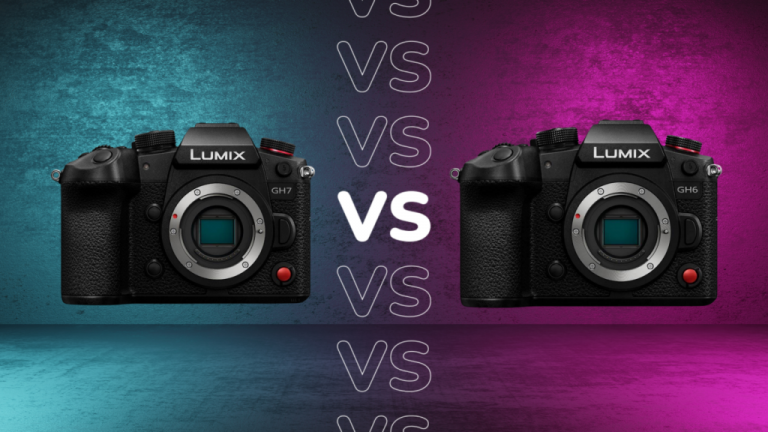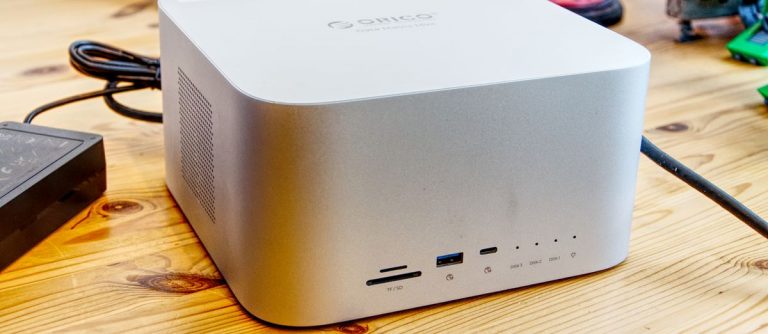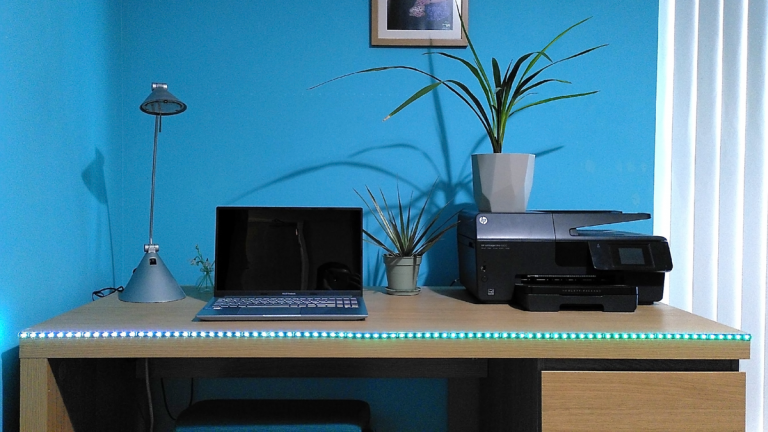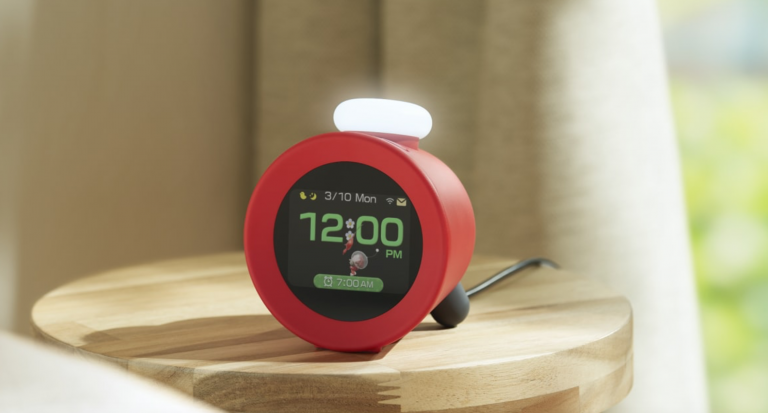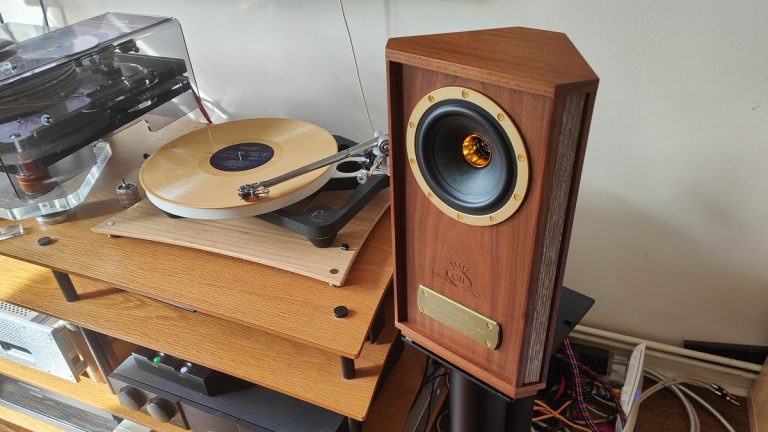Ultimea Poseidon D50 review: this cheap soundbar surround system offers truly excellent value

The Ultimea Poseidon D50 is another super-cheap sound solution from a company that’s really nailing this area. For just $119.99 / £149.99 (about AU$180), you get a soundbar, subwoofer, and two rear speakers – which isn’t bad at all. Not only that, but the quality on offer is pretty solid, making the Poseidon D50 a viable budget option for those interested in adding surround sound to their living space.
This sound system will supply considerably bolder audio than you’d expect to get from your TV alone. With a total power output of 400W, your favorite movies, TV shows and games will fill the width of your room pretty effectively. Surround sound was accessible swiftly, too, thanks to the Poseidon D50’s straightforward setup process. I simply connected the soundbar – which is wirelessly pre-paired to the included subwoofer – to my TV via HDMI, and then connected the subwoofer to the rear speakers via stereo RCA to RCA cables.
This means you don’t need a cable running from the soundbar across to the rear speakers – but you’ll need to position the subwoofer somewhere convenient near the rear speakers. Of course, this wired connection isn’t going to be the easiest on the eye, nor the most practical, but it’s what you’d expect from a sound system with such a small price tag.
I’ll be upfront: you’re not getting astonishing quality with this product. There’s HDMI ARC, but not eARC (which can transmit lossless audio), no groundbreaking feature set, and no Dolby Atmos or DTS:X to create truly three-dimensional sound. So if you’re looking for next-level spatial audio or superb quality sound, you may be better off checking out some of the best Dolby Atmos soundbars and speakers instead.
With that said, the sound you do get is definitely adequate. When watching Top Gun Maverick on Netflix, I was impressed at the three-dimensional sound of soaring aircraft, especially in the absence of Atmos or similar tech. Sure, audio wasn’t the most dynamic or expansive, but for the price you pay, the surround sound certainly surpassed expectations.
I also put the Poseidon D50 to the test with live sport, and found it offered an imperfect, yet relatively enjoyable performance. Similar to when I reviewed the Ultimea Nova S50, I didn’t get particularly clear-cut commentary over the clamor of the crowd, but whistles from the rear speakers and beating drums from the subwoofer helped to immerse me in the viewing experience.
At those times when speech wasn’t competing with similarly pitched background noise, it usually sounded pretty clear, which is ideal for watching the news or listening to podcasts. However, I did feel that higher-pitched voices sometimes sounded a bit tinny, especially when I sat closer to the soundbar, which means speech isn’t always very natural-sounding.
Nevertheless, there are times when vocals are pretty faithful. For instance, when playing Shin Megami Tensei V: Vengeance on PlayStation 5, one deep-voiced character gave a monologue in a wide-open indoor space, and the Poseidon D50’s surround sound helped to emulate the setting effectively, with his bellowing tone carrying without too much distortion.
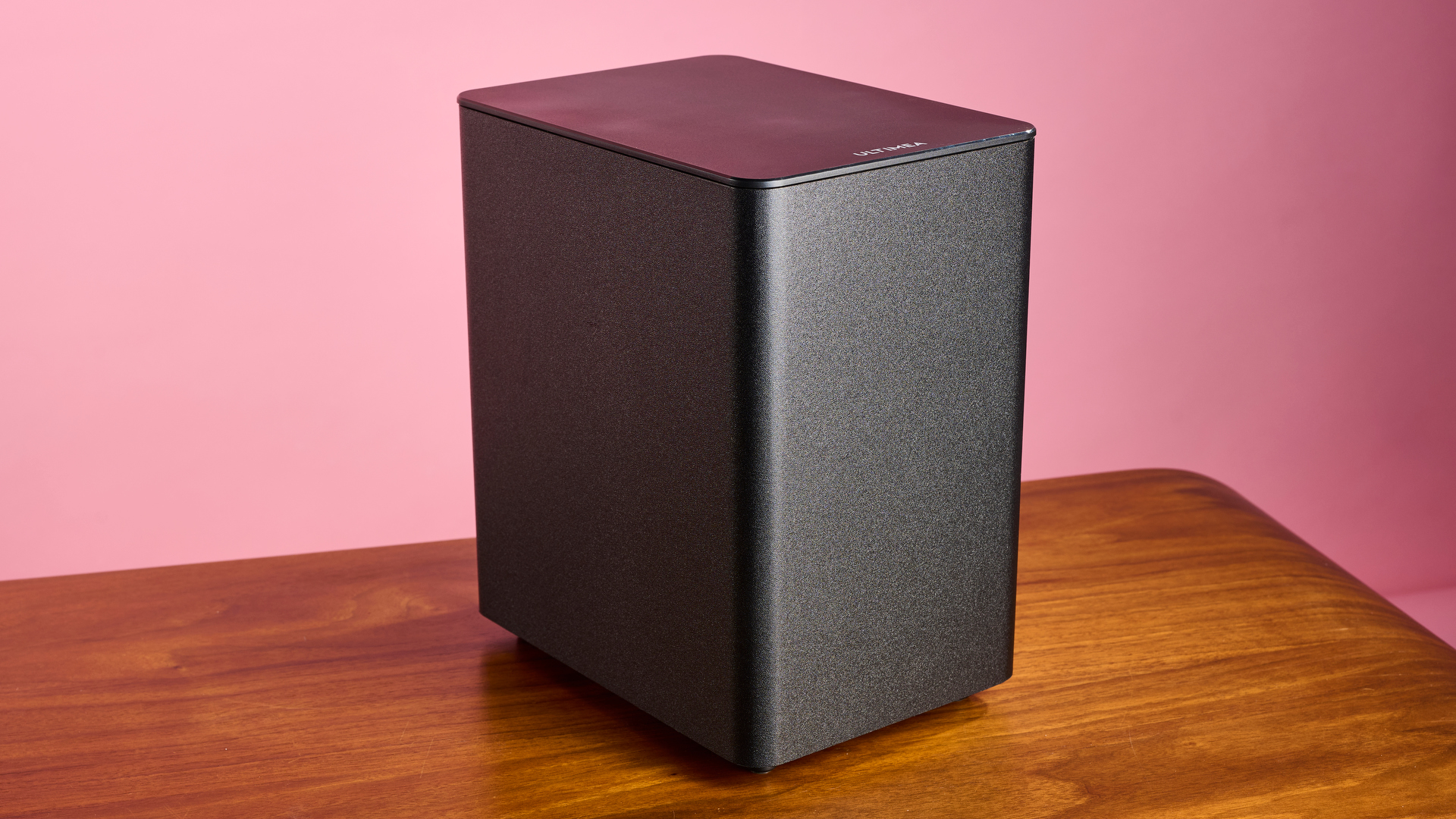
I also connected my Samsung Galaxy Z Flip 4 to the Poseidon D50 over Bluetooth, and tried listening to some music via Spotify. I wasn’t particularly shocked to find that songs didn’t sound amazing played through this soundbar; it’s not tuned that way. When listening to St. Thomas by Sonny Rollins, the saxophone’s high notes didn’t sound the sweetest, and percussion was harsh-sounding at times, especially at higher volumes. Such harshness was more apparent when I sat close to the rear speakers and, sometimes, to the soundbar itself. If you have an especially limited space, this could get a little grating.
The balance of sound in movies is pretty good. At times, I felt that the rear speakers were just a bit too quiet, but, thankfully, the Poseidon D50 has a feature that lets you adjust the weighting between the surround speakers and the soundbar. This was pretty useful when I found myself thirsting for a bit more volume from those rear speakers, and I often found myself setting the system to “Surround +1”. If you ever find yourself wanting to dull the surround speakers, you can set the Poseidon D50 to “Surround -1”, and you can also turn them off entirely with “Surround -2”.
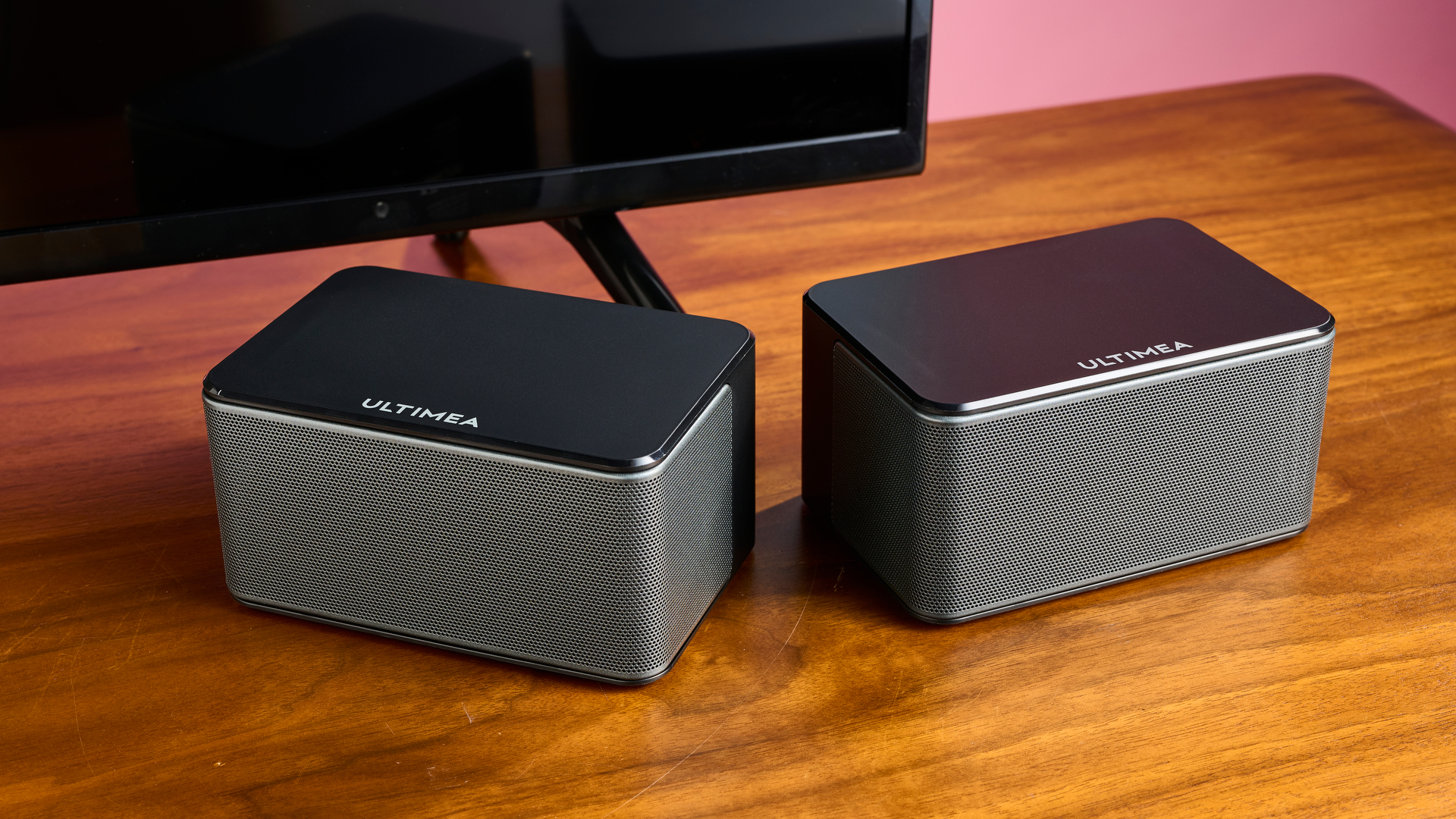
There aren’t too many other features to play with here, although the Poseidon D50 does come with Ultimea BassMax technology. This enables you to apply a boost or reduction to low-frequency sounds. I didn’t feel particularly inclined to crank up the bass, mainly because I didn’t want low-frequency levels to become overbearing, but dampening it was effective if I wanted to make vocals sound clearer.
The Poseidon D50 also has three sound modes: Movie, Dialogue and Music. All have distinct enough audio profiles to make them worth using. However, the soundbar actually displays a variable between 1-3 when switching between them, and I wasn’t initially clear on which number represented which setting – a slight inconvenience, although you can keep the user manual at hand if you forget which is which.
If you’re looking for a super-sexy soundbar that’s going to wow your guests, the Poseidon D50 may not be it. Don’t get me wrong – it doesn’t look too bad, but you can tell it’s budget tech. Like I mentioned in my Ultimea Nova S50 review, these are ultra-affordable products, so it’s no surprise that they have a pretty cheap-feeling and plasticky look. The Poseidon D50 comes with a remote (without the required AAA batteries) that serves its purpose well, and you’ll need to use it if you want to flick through the different sound modes, or alter BassMax levels and surround sound settings.
With the Ultimea Poseidon D50, you’re getting a solid overall package. Its sound quality does waver at times; it doesn’t have a stunning design, nor does it arrive with Atmos or DTS:X. Nevertheless, the Poseidon D50 is still worth considering if you’re in the market for a budget 5.1 soundbar – after all, you get adequate surround sound from it, it’s a lot more powerful and expansive than the speakers on any budget (or even mid-range) TV, it’s easy to set up, and it offers some simple yet effective features.
So if you’re on a tight budget, this is a decent option for cheap surround sound. But if you have a bit more cash to play with, I might suggest picking out an alternative from our guide to the best soundbars instead, such as the highly rated and well-priced Hisense AX5125H.
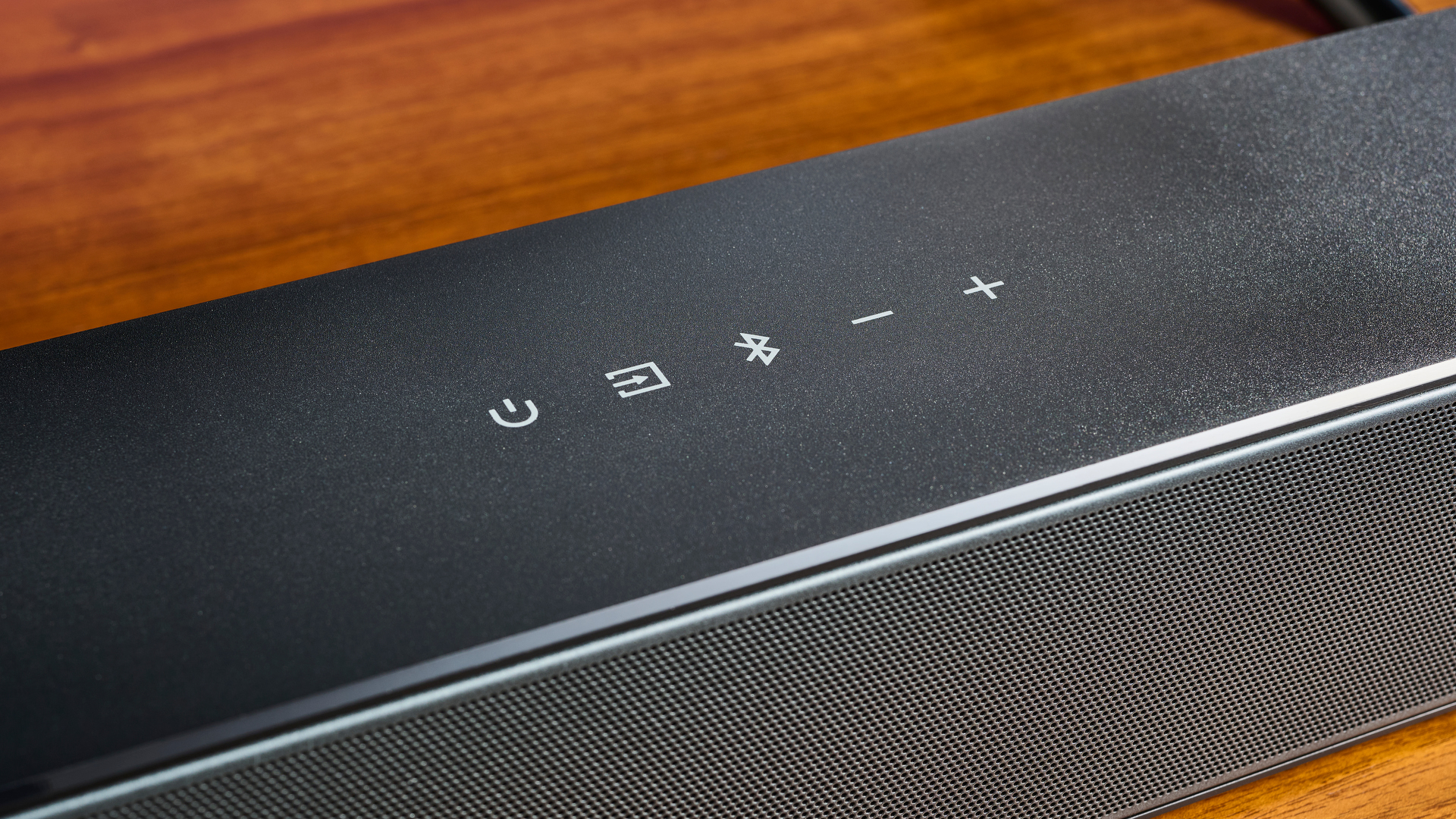
Ultimea Poseidon D50 review: Price and release date
- $119.99 / £149.99 (about AU$180)
- Launched in September 2023
The Ultimea Poseidon D50 initially launched at $219 / £169, but it’s now available for $119.99 / £149.99 (about AU$180) on the official Ultimea website. This is low for a four-box soundbar system, especially with HDMI support.
It’s not hard to find single-unit soundbars for this kind of price, but we’d usually be suspicious of anything offering multiple units – Ultimea has proven itself to be capable of quality products for a low cost, though.
Ultimea Poseidon D50 review: Specs
| Dimensions | Soundbar: 15.7 x 2.8 x 3.5 inches / 400 x 70 x 90mm; Subwoofer: 6.1 x 9.6 x 8.5 inches / 155 x 244 x 215mm; Rear speakers: 5.3 x 2.8 x 3.5 inches / 135 x 70 x 90mm |
| Speaker channels | 5.1 |
| Connections | HDMI ARC, digital optical, AUX, USB, Bluetooth 5.3 |
| Dolby Atmos / DTS:X | No / No |
| Sub included | Yes |
| Rear speakers included | Yes |
| Other features | Ultimea BassMax, 3x sound modes, surround sound controls |
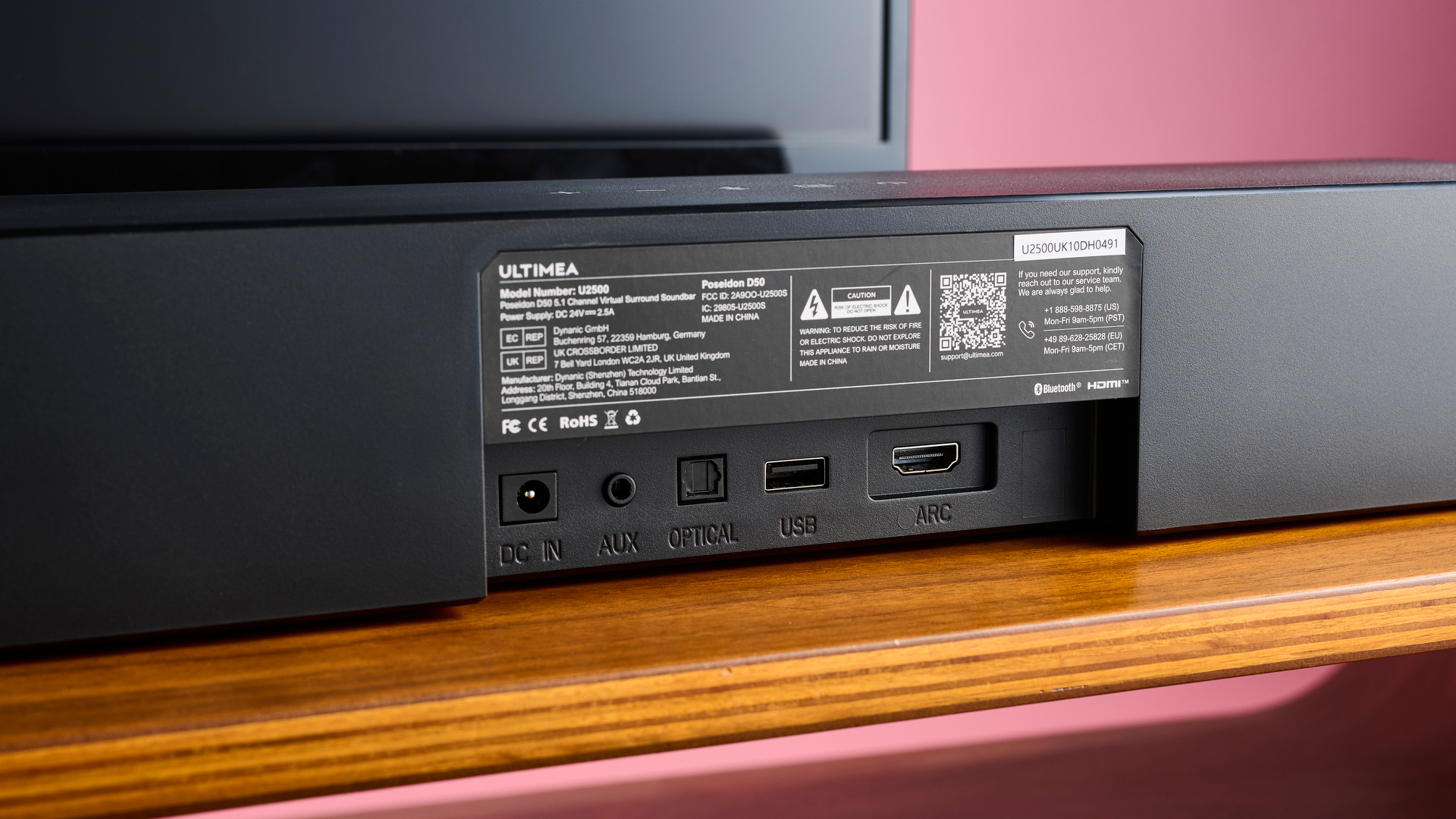
Should you buy the Ultimea Poseidon D50?
| Attributes | Notes | Rating |
|---|---|---|
| Features | Not lots to play with, but sound modes are solid, as are bass/surround controls. | 3.5/5 |
| Audio performance | Sound isn’t high quality nor super-clear, but it’s rarely grating and pretty powerful. | 3.5/5 |
| Design | A little cheap-looking, but quite well sized. | 3.5/5 |
| Setup and usability | Wiring to rear speakers may frustrate some, but setup is simple. | 3.5/5 |
| Value | Issues with quality are easily made up for by an incredibly low price. | 4.5/5 |
Buy it if…
Don’t buy it if…
Ultimea Poseidon D50: Also consider
| Header Cell – Column 0 | Ultimea Poseidon D50 | Roku Streambar | Ultimea Poseidon D60 |
|---|---|---|---|
| Price | $119.99 / £149.99 (about AU$180) | $129.99 / £129.99 (about AU$200) | $199.99 / £239.99 (about AU$300) |
| Dimensions | Soundbar: 15.7 x 2.8 x 3.5 inches / 400 x 70 x 90mm; Subwoofer: 6.1 x 9.6 x 8.5 inches / 155 x 244 x 215mm; Rear speakers: 5.3 x 2.8 x 3.5 inches / 135 x 70 x 90mm | 14 x 2.4 x 4.2 inches / 356 x 61 x 107mm | Soundbar: 15.7 x 2.8 x 3.5 inches / 400 x 70 x 90mm; Subwoofer: 6.1 x 9.6 x 8.5 inches / 155 x 244 x 215mm; Rear speakers: 5.3 x 2.8 x 3.5 inches / 135 x 70 x 90mm |
| Speaker channels | 5.1 | 2.0 | 5.1 |
| Connections | HDMI ARC, digital optical, AUX, USB, Bluetooth 5.3 | HDMI, digital optical, USB, Bluetooth 5.0 | HDMI eARC, digital optical, AUX, USB, Bluetooth 5.3 |
| Dolby Atmos/DTS:X | No/No | No/No | Yes/No |
| Sub included | Yes | No | Yes |
| Rear speakers included | Yes | No | Yes |
| Other features | Ultimea BassMax, 3x sound modes, surround sound controls | Voice controls (remote), clear voice/bass boost settings, Roku app compatibility (enables sound mode adjustment), built-in Roku streaming player | Ultimea BassMax, 3x sound modes, surround sound controls |
Ultimea Poseidon D50 review: How I tested
- Tested for three weeks
- Connected to my Hisense U7K TV at home
- Predominantly used the HDMI ARC connectivity option
I tested the Ultimea Poseidon D50 at home over the course of three weeks. I mainly used HDMI ARC when connecting the soundbar and subwoofer to my Hisense U7K TV.
I put the Poseidon D50 to the test watching a variety of TV shows, videos and movies across streaming services, including Netflix and YouTube. I also played multiple video games on the PlayStation 5 and Nintendo Switch consoles, and listened to music from the TechRadar testing playlist on Spotify by pairing my Samsung Galaxy Z Flip 4 with the Poseidon D50 via Bluetooth.
Source: www.techradar.com

